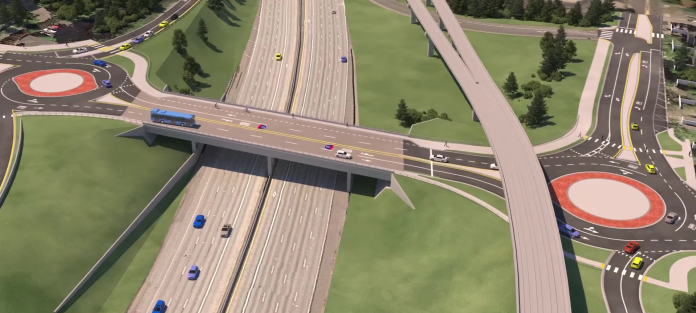
The City of Shoreline has been working diligently to prepare for the arrival of Link light rail in the city, as Sound Transit works toward opening two local stations in 2024. Along with substantial land use changes to accommodate new residents along Shoreline’s transit corridors, a number of transportation projects intended to improve access to the light rail stations at NE 148th and NE 185th Streets have been in planning for quite some time, and construction is about to ramp up on a number of these to coincide with the start of light rail service.
One of the largest-scale projects is taking shape on 145th Street, the shared border between Seattle and Shoreline, which is also a state highway (SR 523) between Aurora Avenue N and Lake City Way NE. Earlier this year, the Shoreline City Council approved the acceptance of a grant that represents the final piece of funding for a substantial remake of the 145th Street interchange at Interstate 5, a stone’s throw from the south Shoreline light rail station at NE 148th Street. That project will replace the existing squared intersections on either side of the interstate with roundabouts, a treatment that the Washington State Department of Transportation (WSDOT) has begun to implement fairly widely around the state, but which doesn’t exist in the city of Seattle.
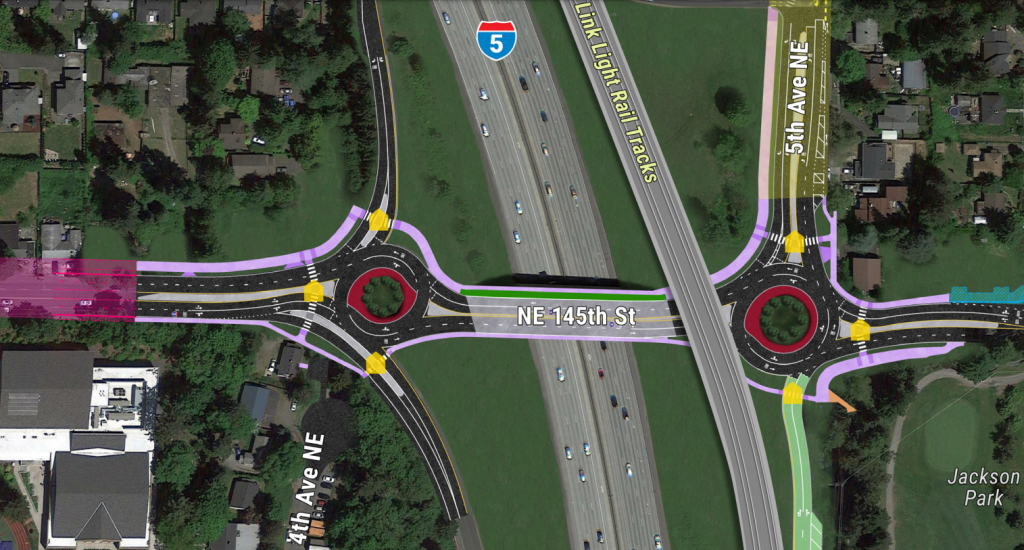
The City of Shoreline touts this specific roundabout design as one that will “improve safety for pedestrians and bicyclists by separating them from vehicle traffic at well-marked and lighted crosswalks and reducing crossing distances,” while also providing increased throughput for vehicles. One primary motivator for the twin roundabout design is that the city says it eliminated a supposed need for turn lanes on the I-5 overpass. In 2016, Shoreline approved a preferred design concept for the corridor that included widening the overpass so that it would be large enough to carry six lanes of traffic in order to add those lanes. That 2016 design actually included a separate, but adjacent, new bridge on the north side of the overpass to carry bike and pedestrian traffic.
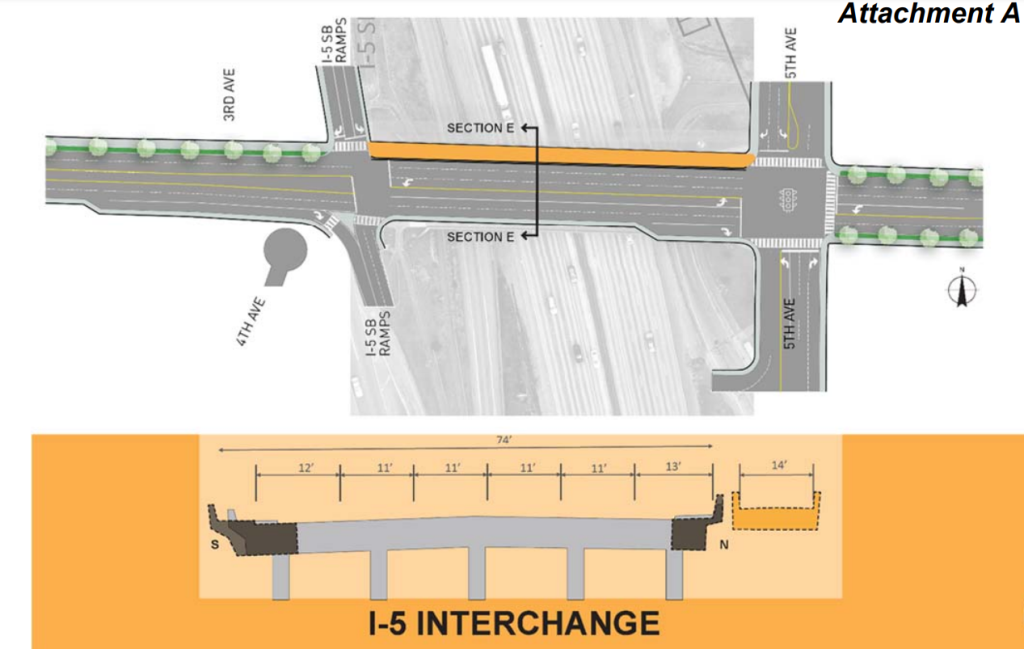
The roundabout design came after WSDOT required Shoreline to analyze them as an alternative to the expensive bridge expansion. That evaluation found that would result in “a lower cost and with as good if not better access and performance for buses, other vehicles, bikes and pedestrians,” a 2019 staff report states. That report detailed concerns that Shoreline city employees had heard about roundabouts in terms of pedestrian safety but contended that this “is not substantiated by accident data from roundabouts across the state and country — and that the level of pedestrian service at roundabouts is significantly better than a signalized counterpart, even if some added walking distance is required.”
WSDOT is all-in on roundabouts: State Traffic Engineer Dongho Chang, recently Seattle’s City Traffic Engineer, has been touting their safety benefits, telling the legislature’s transportation committee earlier this year that national data on replacing a signalized intersection with roundabouts has demonstrated a 78% reduction in serious and fatal crashes at those locations. The agency has installed a number of roundabouts in recent years around the state, but this will likely be the closest one to be built so close to a pedestrian oriented light rail station.
The current design for the interchange adds walking and biking space along the north side of 145th Street, the side most light rail station users will find themselves on. The new overpass will feature an unusual design element: large sidewalks intended to function as multiuse paths on either side of the highway transition to a two-way protected bike lane at street level over I-5. This is the only dedicated space for people who bike in the entire project.
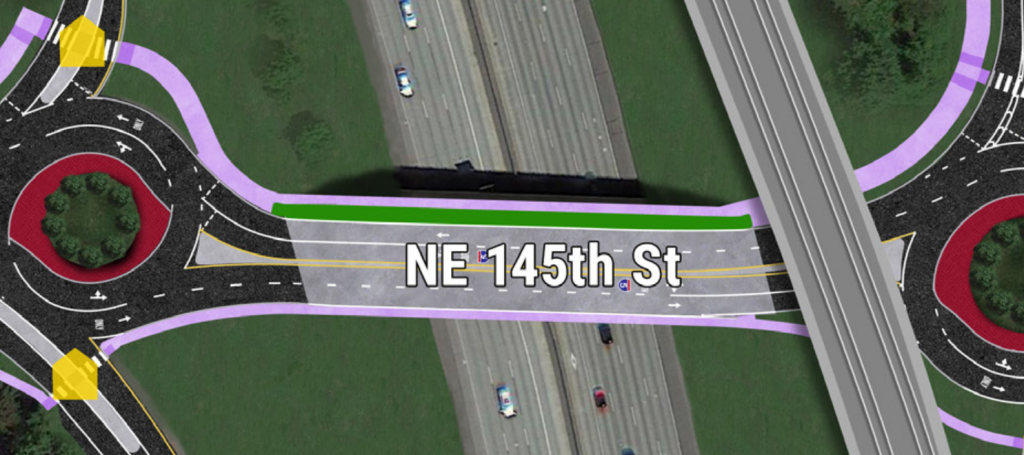
Shoreline Councilmember Christopher Roberts has stated support for raised crosswalks at the roundabouts, which could ensure drivers are slowing down through those pedestrian crossing areas. I asked the City of Shoreline why those aren’t included in the project’s design.
“Raised crosswalks were considered by the project team and WSDOT over a year ago,” said Eric Bratton, communications program manager for Shoreline. “However, WSDOT has generally rejected them as inappropriate for an interchange (or roundabout) that carries both a high volume of general-purpose traffic and a high transit/bus volume as well. Moreover, 145th is frequently used by emergency responders. We received many adverse comments from fire, police, and other first-responders asking the City not to include them in the design.”
Bratton did say that the slip lane allowing drivers to go directly from eastbound 145th Street to southbound I-5 will include a raised crosswalk. Instead of raised crossings, most marked crosswalks will come with rapid flashing beacons.
Interchange Project Pairs With An Expanded 145th Street to the West
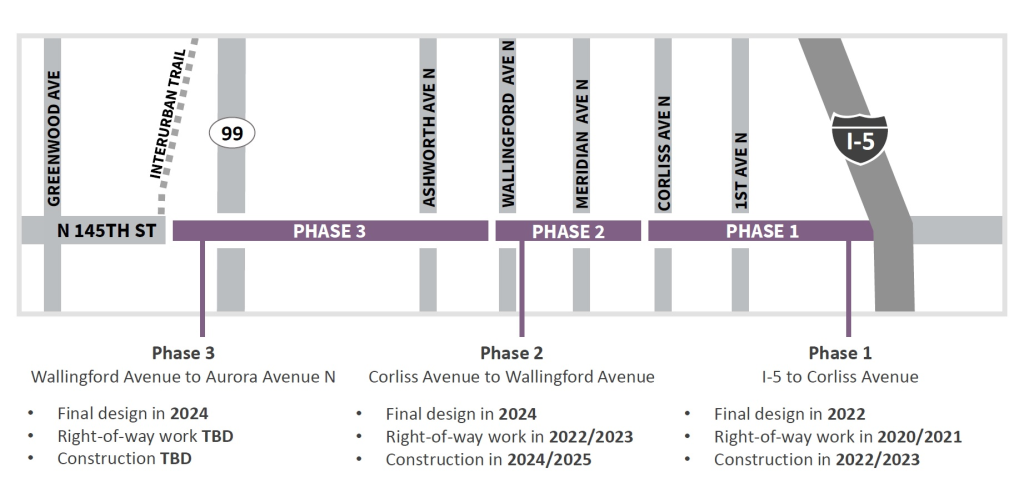
Concurrently with changes to the interchange, Shoreline is working on a separate project aimed at the larger 145th Street corridor between Aurora Avenue and I-5. The city has begun acquiring property to expand the footprint of 145th Street, adding a center turn lane along most of the corridor and bringing the total number of travel lanes on the street from four to five. Pedestrians along the north side of the street will experience a slightly larger sidewalk, with a new buffer between the roadway and the sidewalk. While upgrades to bus service are envisioned along 145th Street as part of Metro’s long range plan, currently the stretch between Aurora Avenue and I-5 only has peak hour bus service, and transit lanes aren’t included in the project design.
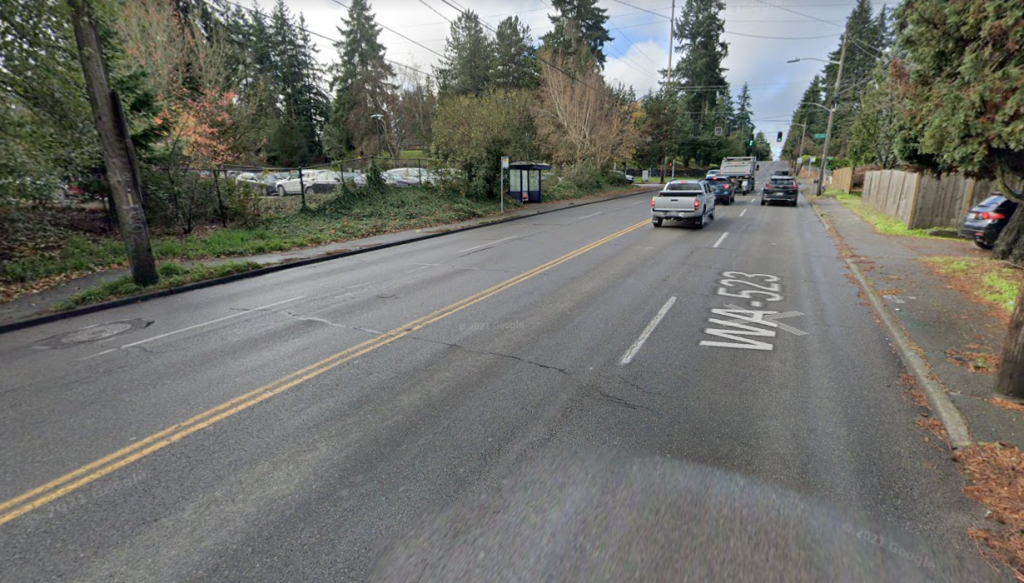
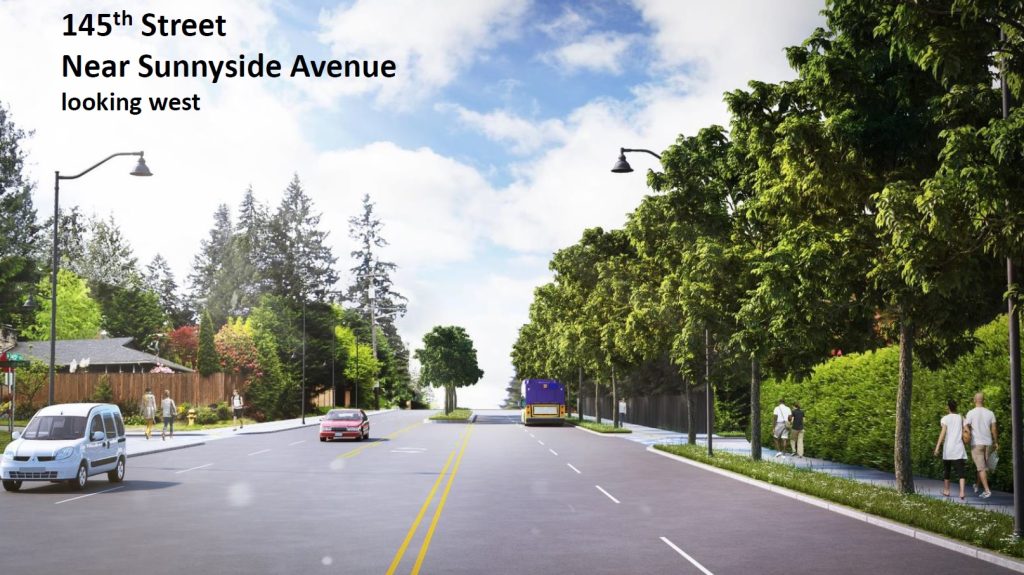
This N 145th Street widening is being done in three phases, with the section of roadway between I-5 and Corliss Avenue N (about four blocks) as the first to happen, with the city hoping to fully complete the widening on that segment by 2024. Phases 2 and 3, which include more property acquisition, have been funded through design but not construction.
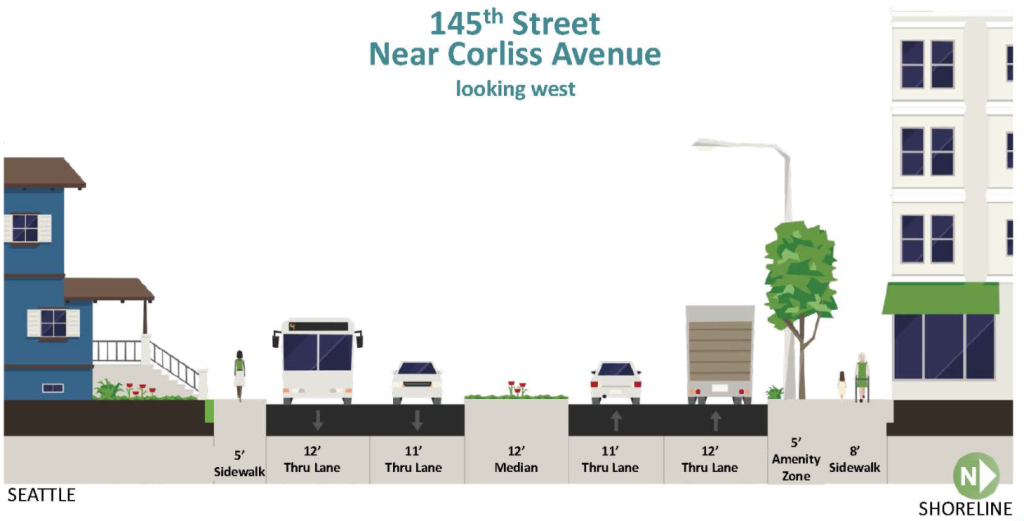
Despite widening the street, no room will be provided along 145th Street for any dedicated bicycle facilities with this project. Instead Shoreline is planning for an “off corridor bicycle network.” This route will include a number of “low volume” streets like Corliss Avenue N, N 150th Street, and Ashworth Avenue N, and so far it looks like many of these streets will only see sharrows and signage as their facility upgrade. Asking people in vehicles to use an “off corridor” street network is patently absurd, but for bikes it’s pretty standard procedure, if not usually so blatantly articulated.
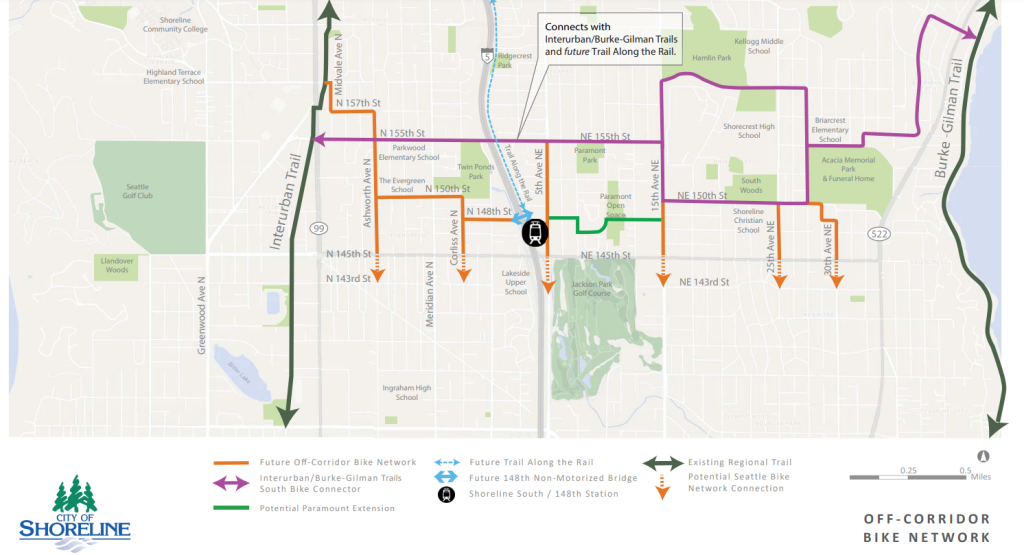
On the day Lynnwood Link opens in 2024, 145th Street will be the primary way for people on bikes to access South Shoreline station from the west side of I-5. A new bicycle and pedestrian bridge, Shoreline’s counterpart to the John Lewis Memorial Bridge at Northgate Station, is planned at 148th Street, and will serve as the heart of that “off corridor” network. But its opening is now slated to occur after the station. With a funding gap remaining on the project, Shoreline is still moving to install the bridge’s east landing, which will be more disruptive to have to construct once the light rail station open. The city hopes to complete the rest of the bridge by 2025 — the project is poised to receive $7 million from the Move Ahead Washington transportation package, barring it falling victim to cuts. If the city isn’t able to secure full funding, it may have to construct the bridge in phases, which will likely cost more money.
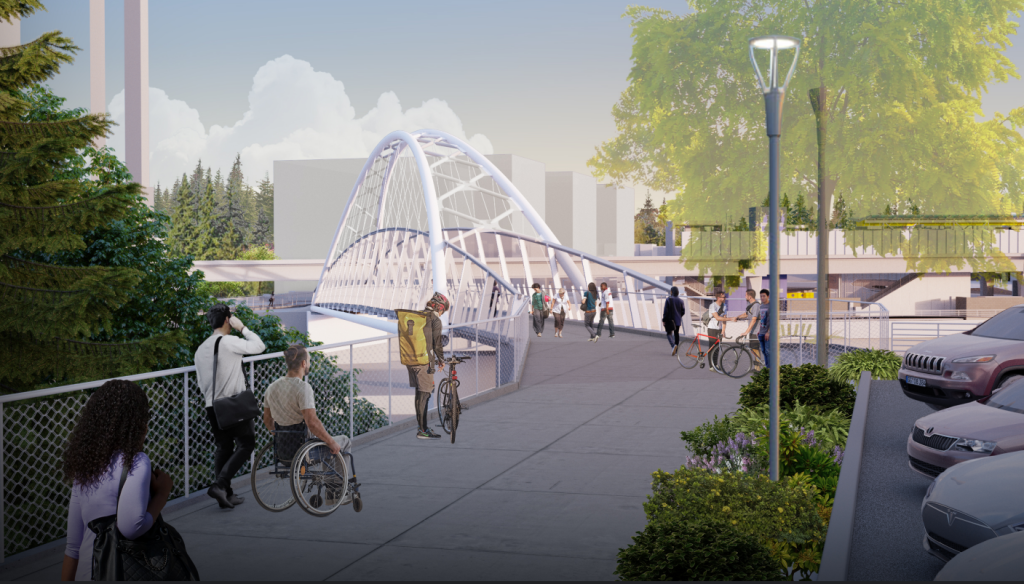
There’s a lot to look forward to in Shoreline’s plans for improving access to Shoreline South/148th Street station. Clearly informing the planning is an attempt to keep everyone moving: transit riders, single occupancy vehicle drivers, and pedestrians. But with these plans, it looks like some users, particularly people on bikes, will lose out to traffic models that are leading a city to buy property in order to add a turn lane. Ultimately, it’s the same thinking that has led to an impasse over plans for a bicycle facility a few miles south at NE 45th Street and I-5. Eventually, the region is going to need to move in a different direction.
Ryan Packer has been writing for The Urbanist since 2015, and currently reports full-time as Contributing Editor. Their beats are transportation, land use, public space, traffic safety, and obscure community meetings. Packer has also reported for other regional outlets including BikePortland, Seattle Met, and PubliCola. They live in the Capitol Hill neighborhood of Seattle.

